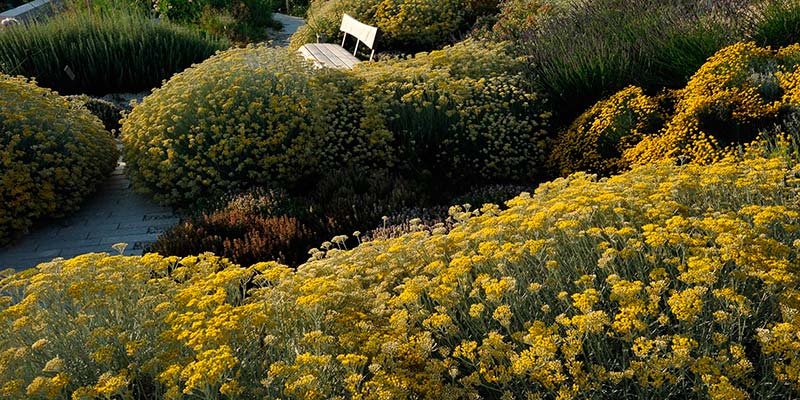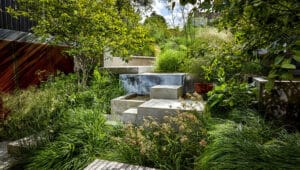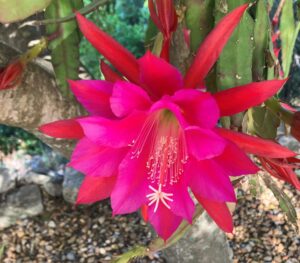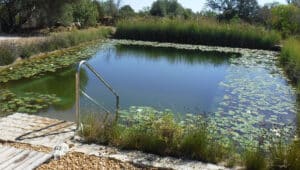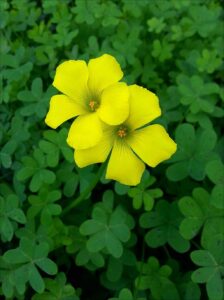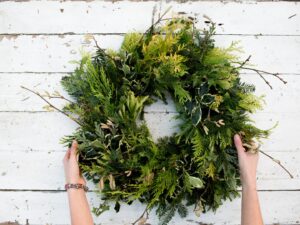We all hope that October and November will bring some much-needed rain, especially so after the last very dry winter and spring. Plants in the ground are looking stressed and there is a huge temptation to give them more water, but don’t do it – stick to your usual routine. Here in the Algarve, we are eagerly awaiting our second spring when rain should wash away the dust and encourage the greening which so swiftly follows the first rains. Plants can recover remarkably quickly and wake from their long summer sleep.
Following the first rains is the perfect time for planting trees, shrubs, perennials and hedging plants – and the start of much activity in the edible garden – while there is warmth and moisture in the soil.
Autumn plantings generally are much better placed to withstand drought the following summer than spring plantings. Most plants, even if drought resistant, need supplementary watering during their first summer or two. Making the traditional bowl or caldeira around the new plant helps by channelling water to the roots.
Give copious summer water at fortnightly or monthly intervals to encourage root development downwards. The sure way to kill most Mediterranean plants and many succulents is to set up a permanent irrigation system – especially so if using spray heads!
When you are choosing new plants, remember the hot, dry summers, possibly with six months of the year without rain. The occasional cold winters in much of the higher hills of the Algarve, with strong winds, also pose a challenge. Check on the drought tolerance and winter hardiness of plants you are interested in.
Choose plants which come from other Mediterranean climate zones of the world rather than tropical or temperate zone plants; they will perform better and require less watering. Best of all, if you are repairing damaged landscapes or garden areas, look at the magnificent range of native plants – yes, those looking at you right now over the garden wall – still green after 18 months of reduced rainfall.
When planting, try to dig a hole about twice the depth and width of the root ball. In stony ground, this could mean using a crowbar! Mix the excavated soil with some organic material such as compost or potting soil and some sand or gravel and use this mix to backfill the planting hole.
First, unless it has rained, fill the planting hole with water and let it drain away; meanwhile standing the plant in a bucket of water so that the root ball is moist. Check also that the root ball is not deformed from too long in the pot; ease out the roots gently after soaking. Then, half fill the planting hole with your soil/compost/sand mix, place the plant, spread out the roots and fill around the sides with the soil mix and firm into place. This might also be the time to mulch the immediate area or the watering bowl to aid moisture retention through sunny winter days. Do not water or mulch heavily too close to stems as this can cause rot, especially so with sub-shrubs such as lavender, rosemary, phlomis and cistus.
Keep an eye on the water requirements of your newly-planted items. For taller shrubs and trees, you may want to use a stake to prevent wind rock. Place this so that the prevailing winds blow the plant stem away from the stake.
Note that the late autumn is also the best time for any transplanting you want to do. This is my favourite time for moving very small native plants which have germinated in the garden and which can be moved before they put down their tap roots. Small seedlings with only four or five leaves can be moved once the ground has had the first good soak.
Other tasks for the autumn include:
■ Sowing seeds of plants that will flower early next year such as larkspur, calendula, sweet peas and hollyhocks.
■ Planting bulbs – in general, plant the bulb at its own depth and allow at least 5cm between bulbs, more for larger bulbs. Choose native/Mediterranean species, good for naturalising. Remember to mark where you have planted the bulbs … in my garden any gap is fair game for inserting another plant!
■ Dividing any herbaceous perennials and ornamental grasses.
■ Pruning summer flowering shrubs such as cestrum and oleanders. Oleander cuttings root very easily in a container of water on a shady windowsill but remember they are extremely toxic.
The Autumn Mediterranean Garden Fair will take place in Silves over two days on October 26 and 27 with a range of plants, succulents, seeds, bulbs and trees from over 18 plant nurseries for your Algarve garden as well as free talks and gardening advice.
For more information, email mgapsec@gmail.com or visit www.mediterraneangardeningportugal.org
By Rosie Peddle
|| features@algarveresident.com
rosie@thebtf.net | 289 791 869
Mediterranean Gardening Association – Portugal




